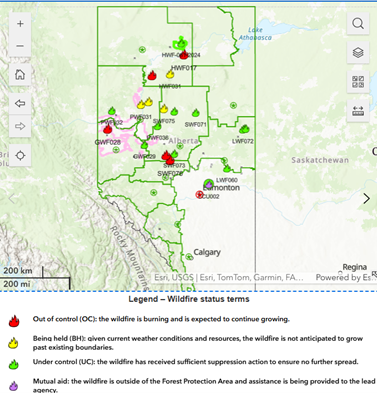
As wildfires become more frequent and intense across many regions, residents living near forested areas must stay vigilant and prepared. Whether you're in a rural community or on the edge of a national park, understanding how to protect yourself, your family, and your property is critical.
1. Stay Informed
The first line of defense is awareness. Monitor local news, weather alerts, and official government channels like Alberta Wildfire or Environment Canada. Sign up for emergency notifications and keep a battery-powered radio on hand in case of power outages.¹

2. Prepare Your Property
Creating a defensible space around your home can significantly reduce the risk of fire damage. Clear dry leaves, pine needles, and other flammable debris from roofs, gutters, and yards. Trim trees and shrubs, especially those close to structures. Store firewood and propane tanks at least 10 meters away from your home.²
3. Pack a “Go Bag”
In the event of an evacuation, every second counts. Prepare an emergency kit with essentials: water, non-perishable food, medications, important documents, flashlights, batteries, and a first-aid kit. Don’t forget masks to protect against smoke inhalation and supplies for pets.³
4. Know Your Evacuation Routes
Familiarize yourself with multiple evacuation routes in case your primary path is blocked. Practice these routes with your family and establish a meeting point in case you get separated.
5. Follow Official Instructions
If authorities issue an evacuation order, leave immediately. Delaying can put you and first responders at greater risk. Once evacuated, do not return until officials declare it safe.
6. Reduce Fire Risks Year-Round
Avoid outdoor burning during dry conditions and always follow local fire bans. Use spark arresters on ATVs and chainsaws, and never discard cigarette butts on the ground.
Wildfires are unpredictable, but your response doesn’t have to be. With preparation and awareness, you can help protect your home and community from the growing threat of forest fires.
² Forest and Prairie Protection Regulation
Sher Kirk – Operations Director, Utility Safety Partners